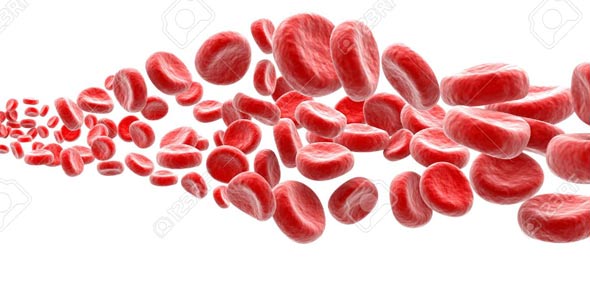Chapter 10: Blood Cells And Functions
-
What are the four blood types?
-
Red, white, rose-colored, orange
-
Erythrocytes, thrombocytes, leukocytes, neutrophils
-
A, B, AB, O
-
Plasma, lymphocytes, monocytes, red blood cells (RBC)
-
The main cells in the human body are the red and white blood cells. The red blood cells are charged with carrying oxygen from the lungs to the body tissues and carbon dioxide as a waste product from the tissues to the lungs. The white blood cells however are charged with protecting the body against foreign invaders. Test out what you understood about blood cells and their functions in the body from chapter ten.

Quiz Preview
- 2.
What are the three formed elements of blood?
-
Spleen, tonsils, thymus
-
Erythocytes, thrombocytes, leukocytes
-
A, B, O
-
Platelets, basophil, monocyte
Correct Answer
A. Erythocytes, thrombocytes, leukocytesExplanation
The three formed elements of blood are erythrocytes (red blood cells), thrombocytes (platelets), and leukocytes (white blood cells). Erythrocytes are responsible for carrying oxygen to the body's tissues, thrombocytes play a crucial role in blood clotting to prevent excessive bleeding, and leukocytes are involved in the immune response, defending the body against infections and diseases.Rate this question:
-
- 3.
What Transports oxygen and carbon dioxide has a lifespan of 80-120 days and and there are approximately 5 million per cubic meter?
-
Erythrocytes
-
Thrombrocytes
-
Leukocytes
-
Monocytes
Correct Answer
A. ErythrocytesExplanation
Erythrocytes, also known as red blood cells, are responsible for transporting oxygen and carbon dioxide in the body. They have a lifespan of 80-120 days and there are approximately 5 million of them per cubic meter.Rate this question:
-
- 4.
Which blood cells provides the bodies main defense against invading pathogens?
-
Erythrocytes
-
Thrombocytes
-
Leukocytes
-
T-cells
Correct Answer
A. LeukocytesExplanation
Leukocytes, also known as white blood cells, provide the body's main defense against invading pathogens. They play a crucial role in the immune system by identifying and destroying foreign substances such as bacteria, viruses, and other harmful microorganisms. Unlike erythrocytes (red blood cells) and thrombocytes (platelets) which are primarily involved in oxygen transport and blood clotting respectively, leukocytes are specifically designed to combat infections and maintain overall health. T-cells, a type of leukocyte, are particularly important in coordinating the immune response and targeting infected cells.Rate this question:
-
- 5.
Which blood cells clots blood and have 200k - 500k in the human body?
-
Erythrocytes
-
Thrombocytes
-
Leukocytes
-
Neutrophill
Correct Answer
A. ThrombocytesExplanation
Thrombocytes are blood cells that are responsible for clotting blood. They help in the formation of blood clots to prevent excessive bleeding. The normal range of thrombocytes in the human body is between 200,000 and 500,000. Erythrocytes, leukocytes, and neutrophils are not directly involved in blood clotting.Rate this question:
-
- 6.
The spleen, tonsils and thymus are all accessories of what system?
-
Circulatory system
-
Muscular system
-
Digestive system
-
Lymphatic system
Correct Answer
A. Lymphatic systemExplanation
The spleen, tonsils, and thymus are all part of the lymphatic system. The lymphatic system is responsible for producing and transporting lymph, a fluid that helps remove toxins, waste, and other unwanted substances from the body. The spleen acts as a filter for the blood and helps in the production of white blood cells. The tonsils and thymus are involved in the immune response, helping to protect the body against infections. Therefore, these organs are all accessories of the lymphatic system.Rate this question:
-
- 7.
Which system 1) Returns fluid from tissue spaces to the blood stream? 2) protects the body against pathogens? 3) serves as a pathway for the absorption of fat?
-
Circulatory system
-
Nervous system
-
Respiratory system
-
Lymphatic system
Correct Answer
A. Lymphatic systemExplanation
The lymphatic system returns fluid from tissue spaces to the blood stream through the lymphatic vessels. It also plays a crucial role in protecting the body against pathogens by filtering and trapping them in lymph nodes. Additionally, the lymphatic system serves as a pathway for the absorption of fat from the digestive system into the bloodstream.Rate this question:
-
Quiz Review Timeline (Updated): Sep 24, 2024 +
Our quizzes are rigorously reviewed, monitored and continuously updated by our expert board to maintain accuracy, relevance, and timeliness.
-
Current Version
-
Sep 24, 2024Quiz Edited by
ProProfs Editorial Team -
Nov 18, 2012Quiz Created by
Phliproc
Blood Cells, Plasma, And Defense Mechanism Quiz
Are you ready for this
Blood cells, Plasma, and Defense Mechanism Quiz? This quiz tests your knowledge and understanding of
Blood cells, Plasma, and their...
Questions:
10 |
Attempts:
1000 |
Last updated:
Sep 24, 2024
|
Blood Cells MCQ For Nursing Students
Mcq for nursing students (2nd year) biochemistry course - mid way point in blood cell lecture series
Questions:
13 |
Attempts:
3629 |
Last updated:
Sep 24, 2024
|
Quiz : How Much You Know About The Types Of Blood Cells!
The human blood is made up of many different kinds of specialized cells that aid in homeostasis. How much do you know about the various types of blood cells? This quiz is will...
Questions:
17 |
Attempts:
8404 |
Last updated:
Sep 24, 2024
|
It's All About Blood Cells
Find out how well do you know about the circulatory system of blood cells and how it helps you too. Let's check it now by taking this quiz!
Questions:
10 |
Attempts:
460 |
Last updated:
Mar 21, 2023
|
Histology Midterm Blood Questions Maktbt Hamed
This quiz, titled 'Histology Midterm Blood Questions Maktbt Hamed,' assesses knowledge on blood cells, focusing on the characteristics of erythrocytes, leucocytes, and...
Questions:
15 |
Attempts:
1569 |
Last updated:
Mar 21, 2023
|
Blood Cells MCQ For Nursing Students
Mcq for nursing students (2nd year) biochemistry course - mid way point in blood cell lecture series
Questions:
13 |
Attempts:
3629 |
Last updated:
Sep 24, 2024
|
 Back to top
Back to top






